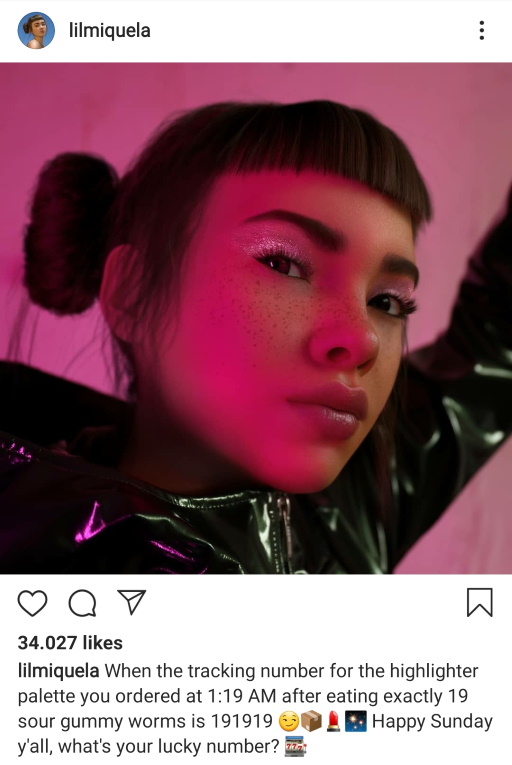Research project: Parasocial relationships with virtual influencers
2019
A small research project testing virtual social media influencers as a social innovation/technology. I conducted an experiment by writing a tool that scraped the top posts of selected Instagram accounts (among which @lilmiquela). Then, a sentiment analysis was performed on the results.
Excerpts of introduction:
"Social media platforms such as Instagram and Twitter have introduced novel forms of mediated communication between humans. One interesting consequence of this is that it has allowed for celebrities to connect with their fans in a more personalized way—evoking feelings of connectedness (Stever & Lawson, 2013). This has been described as increased social presence (Short et al., 1976) having a positive effect on relationship satisfaction (Richardson & Swan, 2003). The increased popularity of such mediated online communication has made way for the development of the social media influencer (SMI)—an independent third-party endorser who shapes audience attitudes towards brands and ideas through the use of social media. In recent years, a new type of influencer has emerged: the virtual social media influencer (VSMI). This is an artificial persona who is shaped to be human-like, charismatic and relatable towards humans. Although they do not exist in the real world, their online presence suggests that they do through their convincing human-like appearance and online behavior.
The sophisticated social lives of humans evolved from primates’ social structures where the maintenance of social relationships was of great importance for their chances of survival. This holds up today for humans as weak social relationships have been linked to higher risk of mortality (Holt-Lunstad et al., 2010). With influencers on social media facilitating a new platform to form parasocial connections with our idols, this research tests whether Instagram users express more positive sentiments towards virtual influencers than they do towards human influencers. As individuals’ interactions with computers are found to be inherently social (Nass et al., 1994), this inquiry could make way for future studies exploring whether VSMI’s and similar modern humanoid social robots could fill the void of insufficient human companionship and help cope with feelings of loneliness."
- Stever, G. S., & Lawson, K. (2013). Twitter as a way for celebrities to communicate with fans: Implications for the study of parasocial interaction. North American journal of psychology, 15(2).
- Short, J., Williams, E., & Christie, B. (1976). The social psychology of telecommunications. John Wiley & Sons.
- Richardson, J., & Swan, K. (2003). Examing social presence in online courses in relation to students' perceived learning and satisfaction.
- Holt-Lunstad, J., Smith, T. B., & Layton, J. B. (2010). Social relationships and mortality risk: a meta-analytic review. PLoS medicine, 7(7), e1000316.
- Nass, C., Steuer, J., & Tauber, E. R. (1994, April). Computers are social actors. In Proceedings of the SIGCHI conference on Human factors in computing systems (pp. 72-78). ACM.
- Dunbar, R. I. (1998). The social brain hypothesis. Evolutionary Anthropology: Issues, News, and Reviews: Issues, News, and Reviews, 6(5), 178-190.
